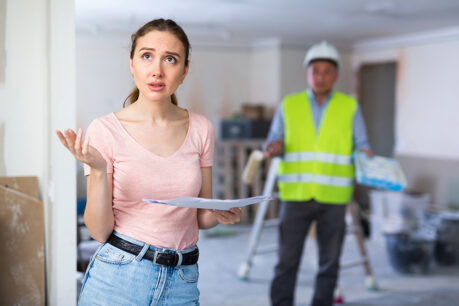
Newer built homes are appealing. Many potential homebuyers may find the modern aesthetic attractive and the home’s features like plumbing and heating, ventilation and air conditioning systems are likely to be newer. It’s no wonder they’re in high demand and competition is fierce over them.
But there is a certain charm to older homes that newer ones just don’t have. And buying an older home that has potential may have less buyers vying over it than others.
While buying an older home may feel intimidating because of its need for a little tender loving care, there are many reasons they could be a great decision.
Older Homes Typically Cost Less Than Newer Homes
Because newer homes are usually built with the newest materials and furnished with the latest appliances, it’s only natural they would cost more. And older homes will sometimes need renovations and remodels, depending on the state of them. However, that’s not to say they’re not worth the purchase. Oftentimes, buying an old home and investing in some home improvement projects may cost less than buying a newer home outright, depending on what you spend your money on.
Older Homes Often Have More Character
As you’re perusing property listings, you may notice that newer homes generally all look similar or have a similar aesthetic. Neutral colors and open concepts are common among many newer built homes, and it may feel like properties with a little personality are harder to find.
Many older homes are built in a specific architectural style that are rare to find in newly built homes today. For example, Victorian style homes have unique ornamentation such as brackets, spindles and patterned shingles while Queene Anne homes are characterized by their fish-scale patterns and coquettish detailing. So, if you’re looking for a home with more charm, it may be worth it to look for an older home.
Older Homes are Likely in Established Locations
When you’re looking for an older home, you may notice that they’re more likely to be in an established neighborhood, closer to amenities like grocery stores, schools, gyms and entertainment. If walkability and short distances to these types of features are important to you, you may want to buy an older home in an established, developed and stable location. Many newer homes are more commonly being built in the suburbs.
Older Homes Tend to Have Larger Lot Sizes
According to a United States Census Bureau® report, the size of the lots that homes are built on has decreased. The median lot size from the 1970s to the 1990s was 0.32 acres while from 2005 to 2009, the median lot size was 0.25 acres—A decrease of 0.07 acres. If you have a family that requires more open space in your backyard to play and run around in, you may want to consider an older home with a bigger lot size than a newer one. Newer homes themselves are more likely to be bigger but on a smaller lot.
Older Homes May Have Better Quality Construction
While the amenities and appliances in an older home may be outdated, some older homes have benefited from higher quality construction materials. In the past, builders made these homes out of stronger and more decay- and pest-resistant old-growth wood. They can be less prone to sagging, delamination and water damage than other types we use today. Since we used all this old-growth wood to build houses already, many newer homes are likely built with sapwood and wood studs which may not be as sturdy.
Older Homes May Be Faster to Buy Than New Homes
Since newer homes are in heavy demand by many consumers, there is likely to be more competition which may result in a longer homebuying process. And if you were considering a new construction, you could experience construction delays or supply issues that may slow down the building process. You may want to consider buying an older house if you don’t want to wait or compete with other buyers. Then if the older home does need a remodel or renovation, you may be able to get started on it right away.
Newer Isn’t Always Better
With all the benefits a newer home has, there are some drawbacks as well. Many may be a lot more pricey, you may have to pay a homeowners association (HOA) fee, and they may get snatched up quickly or you may end up in a bidding war in a busy real estate market.
Although many older homes may need some work done and some new appliances installed before they’re actually livable, you may not want to write them off immediately. If you’re willing to put in a little time and energy into an older home, you could have a charming, one-of-a-kind and well-built home to call your own.
Don’t bypass an older home just yet. They could be a hidden gem. All you have to do is find it.
This information is intended for educational purposes only. Products and interest rates subject to change without notice. Loan products are subject to credit approval and include terms and conditions, fees and other costs. Terms and conditions may apply. Property insurance is required on all loans secured by property. VA loan products are subject to VA eligibility requirements. Adjustable Rate Mortgage (ARM) interest rates and monthly payment are subject to adjustment. Upon submission of a full application, a mortgage banker will review and provide you with the terms, conditions, disclosures, and additional details on the interest rates that apply to your individual situation.


